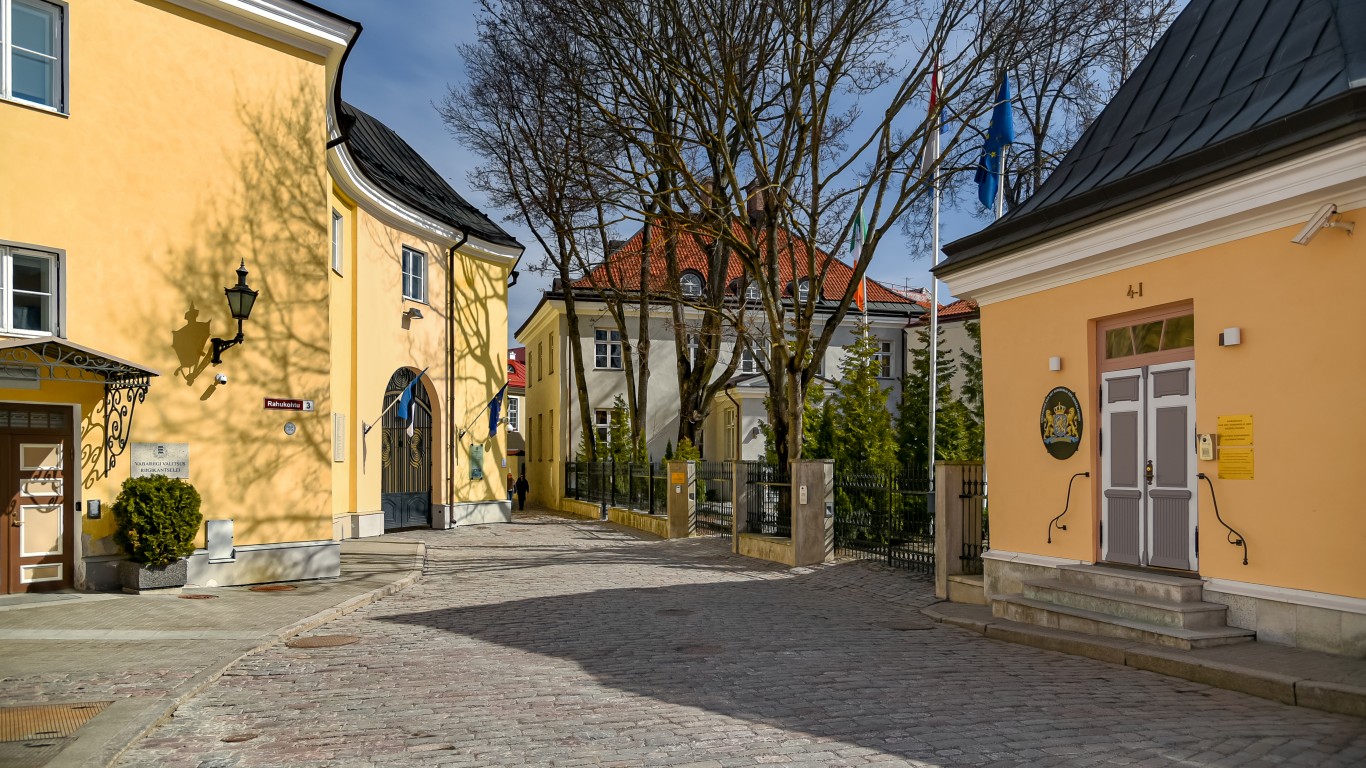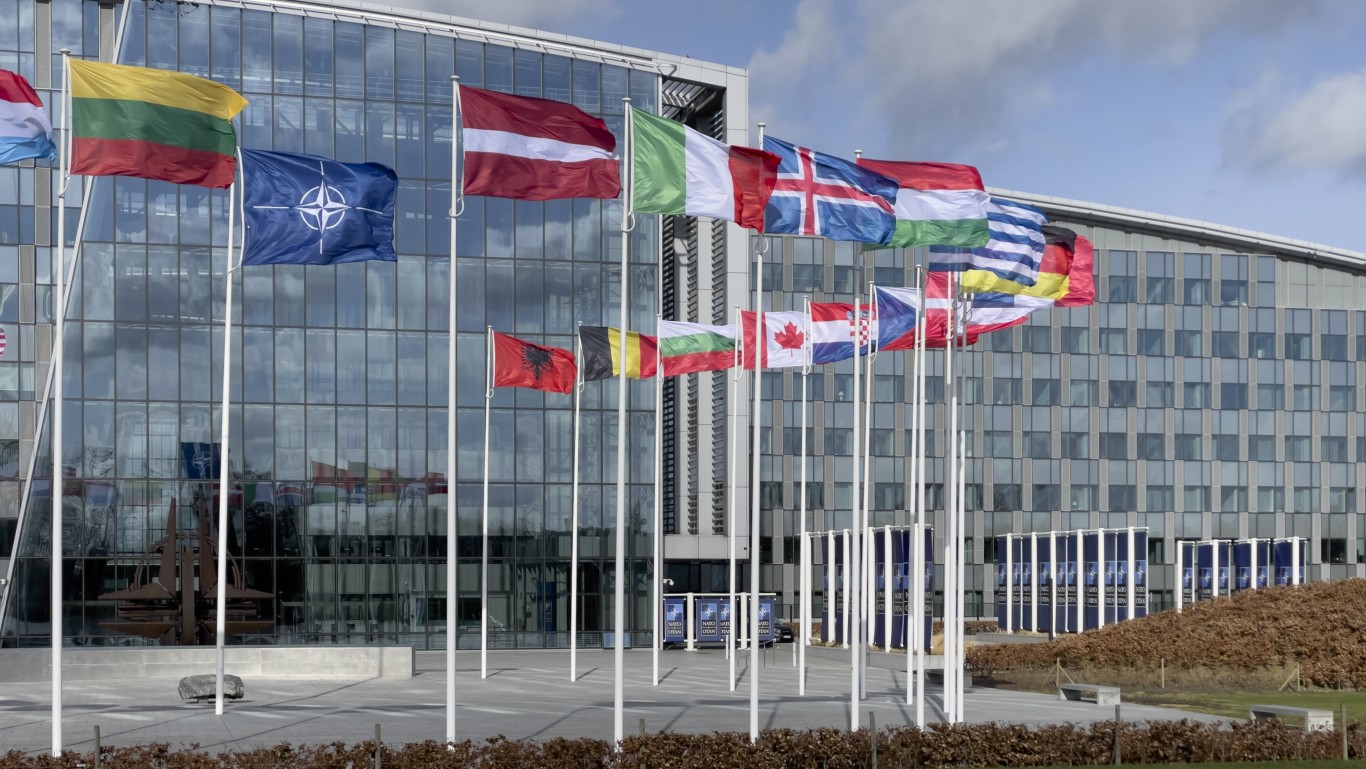
For the third time in a decade, the North Atlantic Treaty Organization welcomed a new member this year. On April 4, 2023, Finland became the 31st member of the NATO alliance, following North Macedonia in 2020 and Montenegro in 2017. Though Finland has long cooperated with NATO, its policy of non-military alignment precluded its joining the alliance. That all changed, however, with Russia’s full-scale invasion of Ukraine in February 2022.
Only three months after the invasion began, Finland submitted a formal letter requesting accession to NATO, and less than a year later, the request was granted. Originally formed in 1949 as a check against Soviet expansion in the post-World War II era, the NATO alliance has attained heightened relevance in this new era of Russian expansion aspirations. (Here is a look at Russia’s 20 biggest bombs.)
Ultimately, NATO is a collective defense alliance, the members of which are bound by Article 5 of the founding treaty to come to one another’s defensive aid. And because deterrence against foreign hostility is at the core of the treaty, military readiness is the principal asset NATO members bring to the alliance. In keeping with this logic, NATO Defense Ministers agreed in 2006 to a guideline stipulating that alliance members commit to spend a minimum of 2% of their annual GDP. Though over a decade and a half has passed since the agreement, military spending in most NATO countries falls short of the minimum stipulated.
Using data from the Stockholm International Peace Research Institute, 24/7 Wall St. reviewed military spending for each of the 31 NATO member states. Countries are ranked by 2022 military spending as a share of GDP. Supplementary data on military spending in current U.S. dollars for 2022 is also from SIPRI, while 2021 population data is from the World Bank.
Though a founding member of NATO, Iceland is the only country without a standing military and spends little on defense beyond its Coast Guard. Among the remaining countries, military spending ranges from 0.7% of GDP in Luxembourg to 3.7% in Greece.
While Greece has the largest military budget as compared to its GDP of any NATO member, no country – NATO member or not – spends more than the U.S. on its military, in dollar terms. American military spending topped $876 billion 2022, more than double the spending of all other NATO countries combined. The U.S. military spending amounted to 3.5% of its GDP, the second largest share among NATO allies. The U.S. also has the world’s largest economy – roughly equal to the GDPs of all other member countries combined. (Here is a look at the 35 billion-dollar weapons in the 2024 U.S. military budget.)
Click here to see how much each NATO country spends on their military.
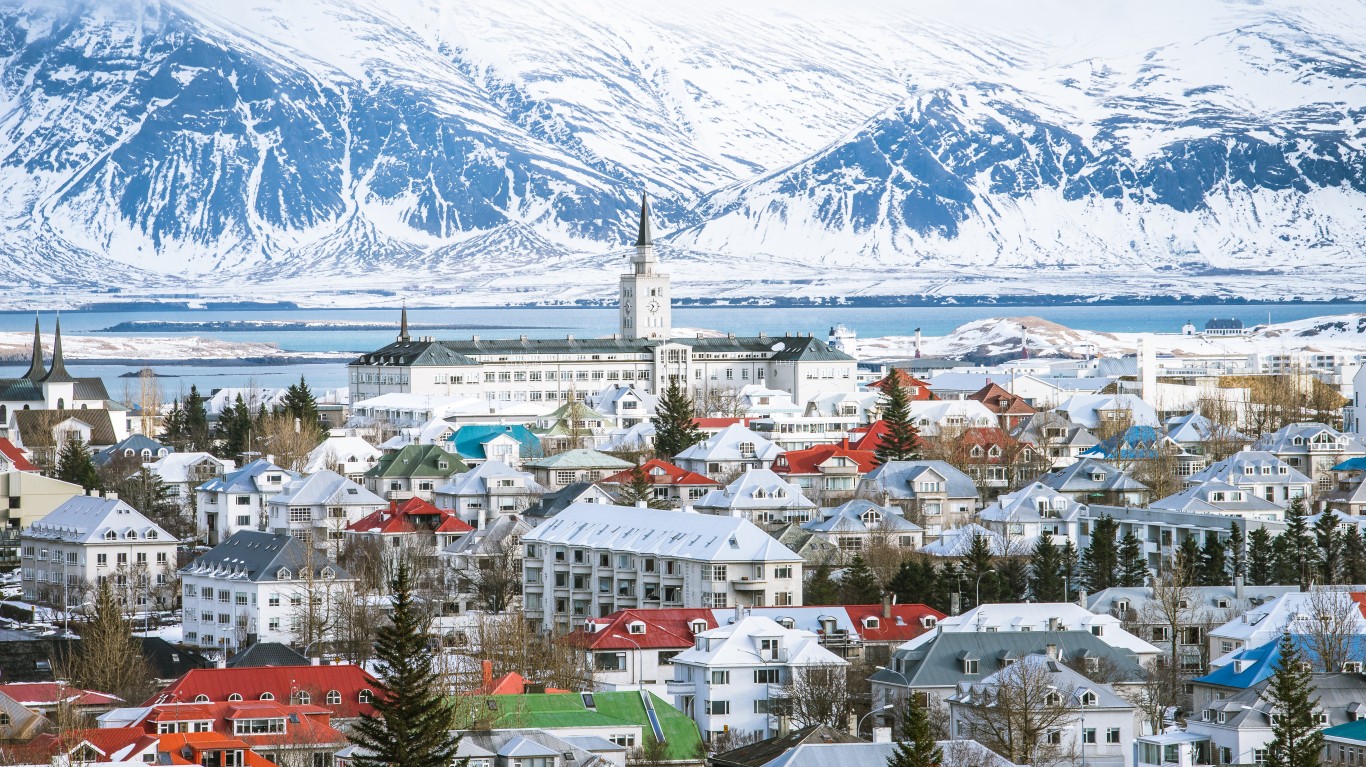
31. Iceland
> Military spending, 2022: N/A (no standing military)
> Year of accession to NATO alliance: 1949 (founding member)
> Current head of government: Prime Minister Katrín Jakobsdottir
> Population, 2021: 372,520 (the smallest of 31 member states)
[in-text-ad]

30. Luxembourg
> Military spending, 2022: 0.70% of GDP ($564.6 million total – 27th highest of 31 member states)
> Year of accession to NATO alliance: 1949 (founding member)
> Current head of government: Prime Minister Xavier Bettel
> Population, 2021: 640,064 (29th largest of 31 member states)

29. Belgium
> Military spending, 2022: 1.18% of GDP ($6.9 billion total – 13th highest of 31 member states)
> Year of accession to NATO alliance: 1949 (founding member)
> Current head of government: Prime Minister Alexander De Croo
> Population, 2021: 11,592,952 (12th largest of 31 member states)

28. Slovenia
> Military spending, 2022: 1.19% of GDP ($735.2 million total – 26th highest of 31 member states)
> Year of accession to NATO alliance: 2004
> Current head of government: Prime Minister Robert Golob
> Population, 2021: 2,108,079 (25th largest of 31 member states)
[in-text-ad-2]

27. Turkey
> Military spending, 2022: 1.23% of GDP ($10.6 billion total – 10th highest of 31 member states)
> Year of accession to NATO alliance: 1952
> Current head of government: President Recep Tayyip Erdogan
> Population, 2021: 84,775,404 (2nd largest of 31 member states)

26. Canada
> Military spending, 2022: 1.24% of GDP ($26.9 billion total – 6th highest of 31 member states)
> Year of accession to NATO alliance: 1949 (founding member)
> Current head of government: Prime Minister Justin Trudeau
> Population, 2021: 38,246,108 (8th largest of 31 member states)
[in-text-ad]

25. Portugal
> Military spending, 2022: 1.35% of GDP ($3.5 billion total – 18th highest of 31 member states)
> Year of accession to NATO alliance: 1949 (founding member)
> Current head of government: Prime Minister Antonio Costa
> Population, 2021: 10,325,147 (15th largest of 31 member states)

24. Czech Republic
> Military spending, 2022: 1.36% of GDP ($4.0 billion total – 17th highest of 31 member states)
> Year of accession to NATO alliance: 1999
> Current head of government: Prime Minister Petr Fiala
> Population, 2021: 10,505,772 (14th largest of 31 member states)

23. Germany
> Military spending, 2022: 1.39% of GDP ($55.8 billion total – 3rd highest of 31 member states)
> Year of accession to NATO alliance: 1955
> Current head of government: Chancellor Olaf Scholz
> Population, 2021: 83,196,078 (3rd largest of 31 member states)
[in-text-ad-2]
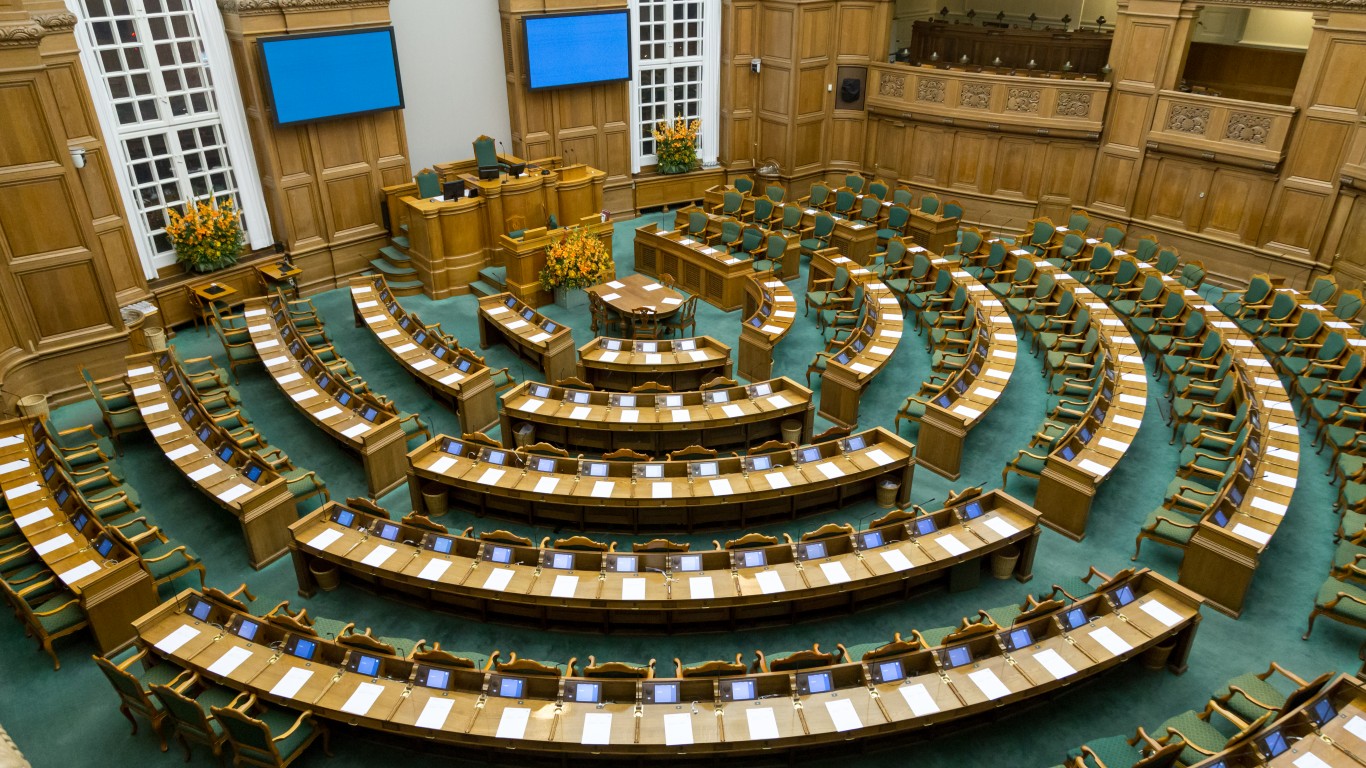
22. Denmark
> Military spending, 2022: 1.42% of GDP ($5.5 billion total – 14th highest of 31 member states)
> Year of accession to NATO alliance: 1949 (founding member)
> Current head of government: Prime Minister Mette Frederiksen
> Population, 2021: 5,856,733 (18th largest of 31 member states)

21. Spain
> Military spending, 2022: 1.47% of GDP ($20.3 billion total – 7th highest of 31 member states)
> Year of accession to NATO alliance: 1982
> Current head of government: Prime Minister Pedro Sanchez Perez-Castejon
> Population, 2021: 47,415,750 (7th largest of 31 member states)
[in-text-ad]
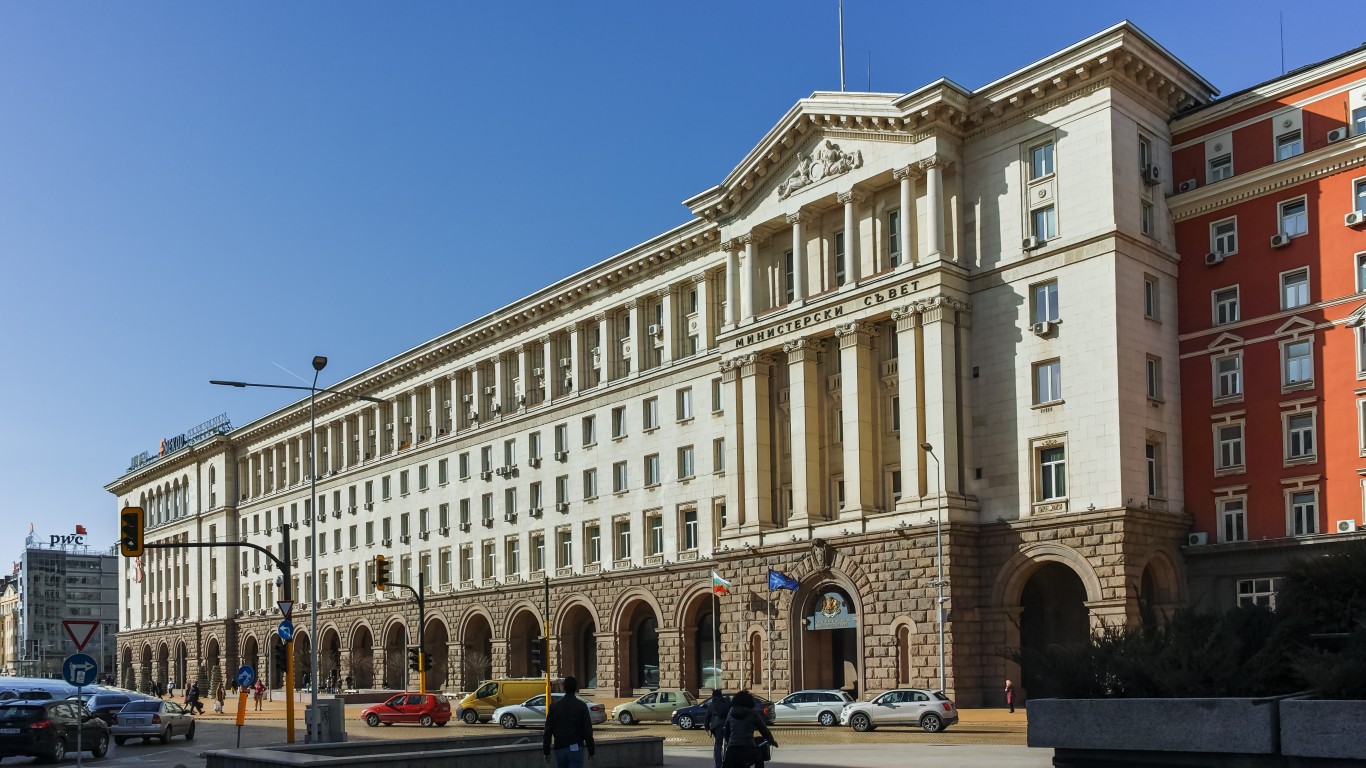
20. Bulgaria
> Military spending, 2022: 1.51% of GDP ($1.3 billion total – 22nd highest of 31 member states)
> Year of accession to NATO alliance: 2004
> Current head of government: Prime Minister Galab Donev
> Population, 2021: 6,877,743 (17th largest of 31 member states)

19. Hungary
> Military spending, 2022: 1.53% of GDP ($2.6 billion total – 19th highest of 31 member states)
> Year of accession to NATO alliance: 1999
> Current head of government: Prime Minister Viktor Orban
> Population, 2021: 9,709,891 (16th largest of 31 member states)

18. Netherlands
> Military spending, 2022: 1.58% of GDP ($15.6 billion total – 9th highest of 31 member states)
> Year of accession to NATO alliance: 1949 (founding member)
> Current head of government: Prime Minister Mark Rutte
> Population, 2021: 17,533,044 (11th largest of 31 member states)
[in-text-ad-2]

17. Albania
> Military spending, 2022: 1.58% of GDP ($288.7 million total – 28th highest of 31 member states)
> Year of accession to NATO alliance: 2009
> Current head of government: Prime Minister Edi Rama
> Population, 2021: 2,811,666 (23rd largest of 31 member states)

16. North Macedonia
> Military spending, 2022: 1.61% of GDP ($225.0 million total – 29th highest of 31 member states)
> Year of accession to NATO alliance: 2020
> Current head of government: Prime Minister Dimitar Kovachevski
> Population, 2021: 2,065,092 (26th largest of 31 member states)
[in-text-ad]

15. Montenegro
> Military spending, 2022: 1.61% of GDP ($98.0 million total – 30th highest of 31 member states)
> Year of accession to NATO alliance: 2017
> Current head of government: Prime Minister Dritan Abazovic
> Population, 2021: 619,211 (30th largest of 31 member states)
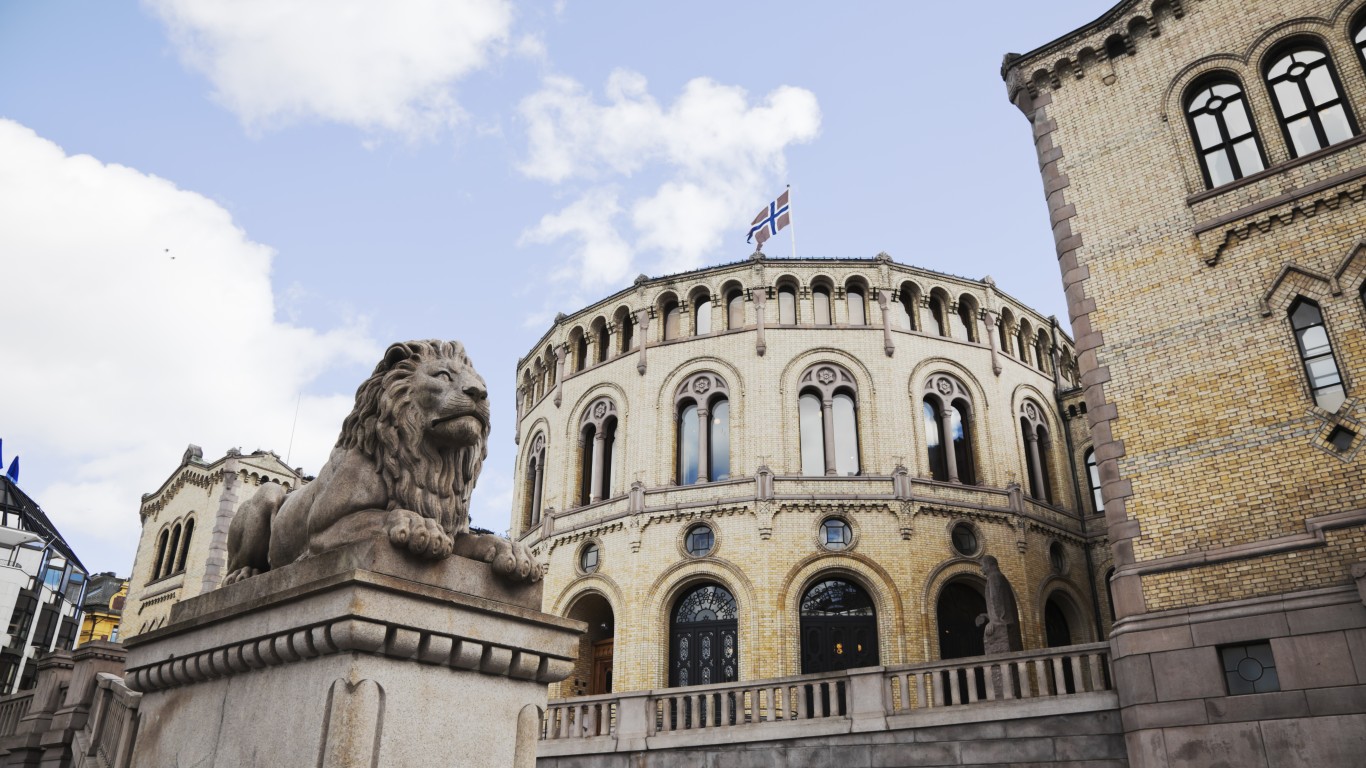
14. Norway
> Military spending, 2022: 1.64% of GDP ($8.4 billion total – 11th highest of 31 member states)
> Year of accession to NATO alliance: 1949 (founding member)
> Current head of government: Prime Minister Jonas Gahr Store
> Population, 2021: 5,408,320 (21st largest of 31 member states)
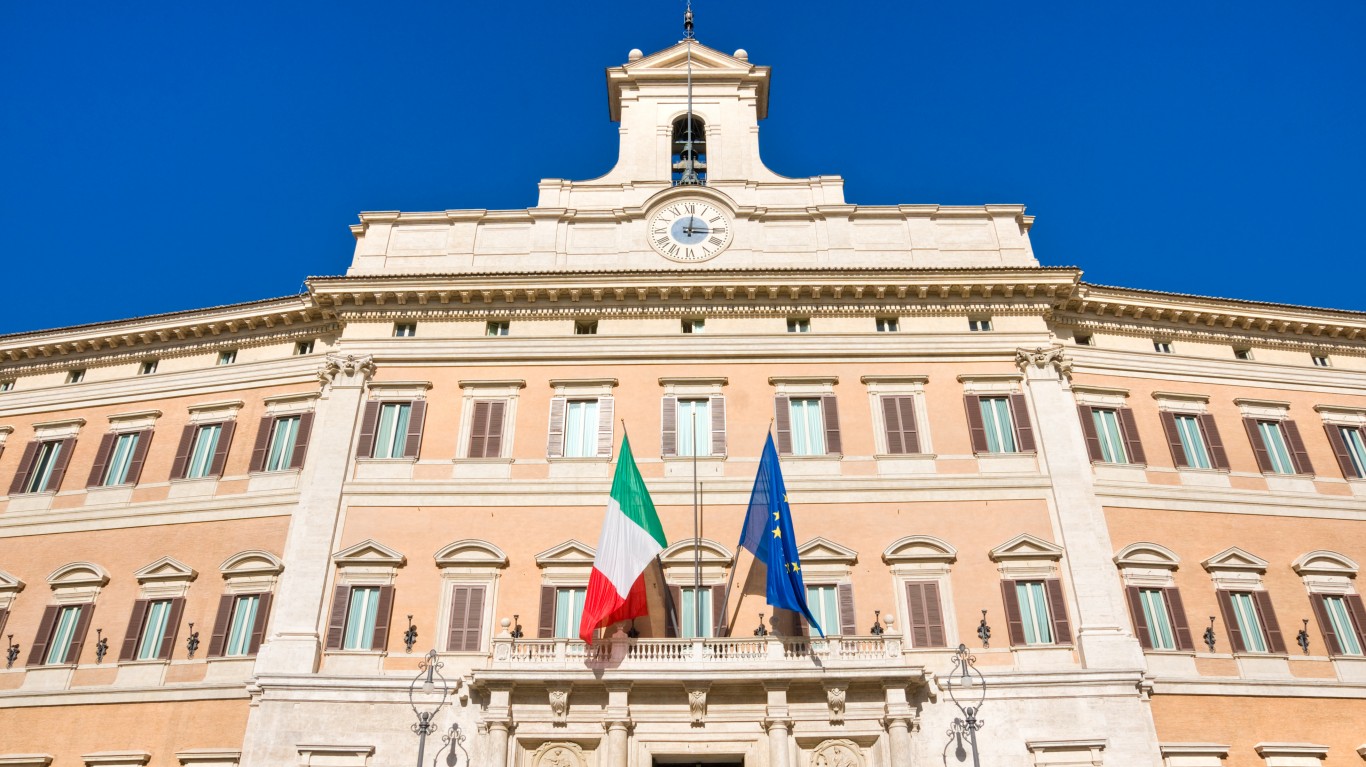
13. Italy
> Military spending, 2022: 1.68% of GDP ($33.5 billion total – 5th highest of 31 member states)
> Year of accession to NATO alliance: 1949 (founding member)
> Current head of government: Prime Minister Giorgia Meloni
> Population, 2021: 59,109,668 (6th largest of 31 member states)
[in-text-ad-2]

12. Finland
> Military spending, 2022: 1.72% of GDP ($4.8 billion total – 16th highest of 31 member states)
> Year of accession to NATO alliance: 2023
> Current head of government: Prime Minister Sanna Marin
> Population, 2021: 5,541,017 (19th largest of 31 member states)
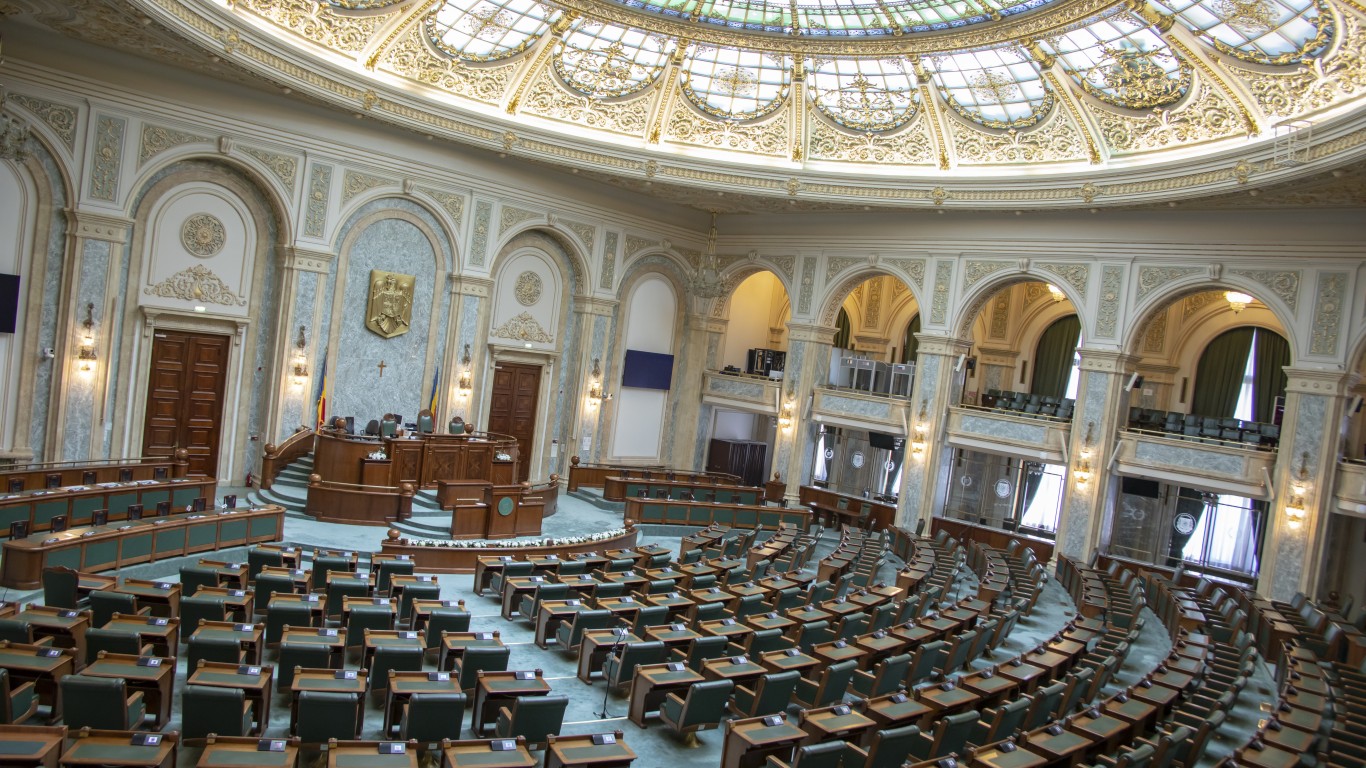
11. Romania
> Military spending, 2022: 1.73% of GDP ($5.2 billion total – 15th highest of 31 member states)
> Year of accession to NATO alliance: 2004
> Current head of government: Prime Minister Nicolae-Ionel Ciuca
> Population, 2021: 19,119,880 (10th largest of 31 member states)
[in-text-ad]

10. Slovakia
> Military spending, 2022: 1.76% of GDP ($2.0 billion total – 20th highest of 31 member states)
> Year of accession to NATO alliance: 2004
> Current head of government: Prime Minister Eduard Heger
> Population, 2021: 5,447,247 (20th largest of 31 member states)

9. France
> Military spending, 2022: 1.94% of GDP ($53.6 billion total – 4th highest of 31 member states)
> Year of accession to NATO alliance: 1949 (founding member)
> Current head of government: Prime Minister Elisabeth Borne
> Population, 2021: 67,749,632 (4th largest of 31 member states)

8. Latvia
> Military spending, 2022: 2.05% of GDP ($848.8 million total – 24th highest of 31 member states)
> Year of accession to NATO alliance: 2004
> Current head of government: Prime Minister Krisjanis Karins
> Population, 2021: 1,884,490 (27th largest of 31 member states)
[in-text-ad-2]
7. Estonia
> Military spending, 2022: 2.09% of GDP ($810.9 million total – 25th highest of 31 member states)
> Year of accession to NATO alliance: 2004
> Current head of government: Prime Minister Kaja Kallas
> Population, 2021: 1,330,932 (28th largest of 31 member states)
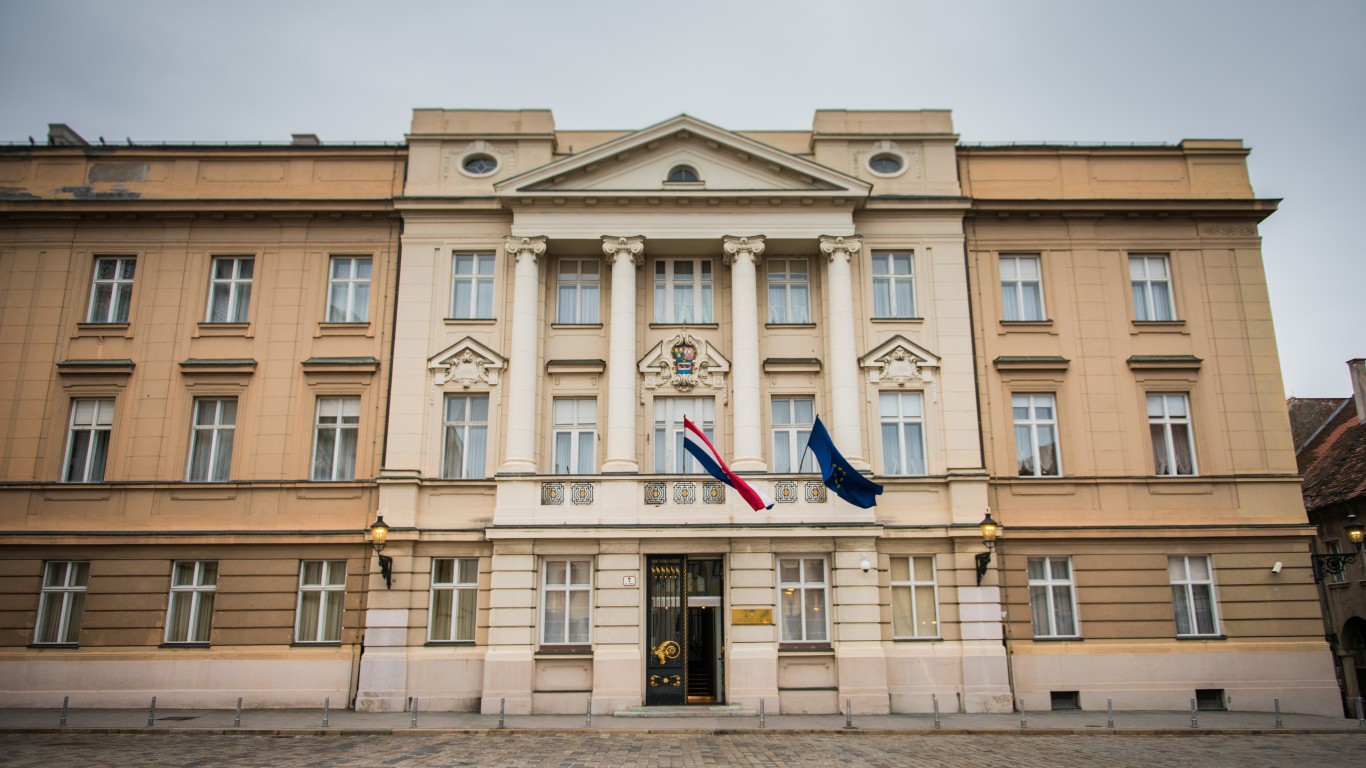
6. Croatia
> Military spending, 2022: 2.17% of GDP ($1.3 billion total – 23rd highest of 31 member states)
> Year of accession to NATO alliance: 2009
> Current head of government: Prime Minister Andrej Plenkovic
> Population, 2021: 3,899,000 (22nd largest of 31 member states)
[in-text-ad]
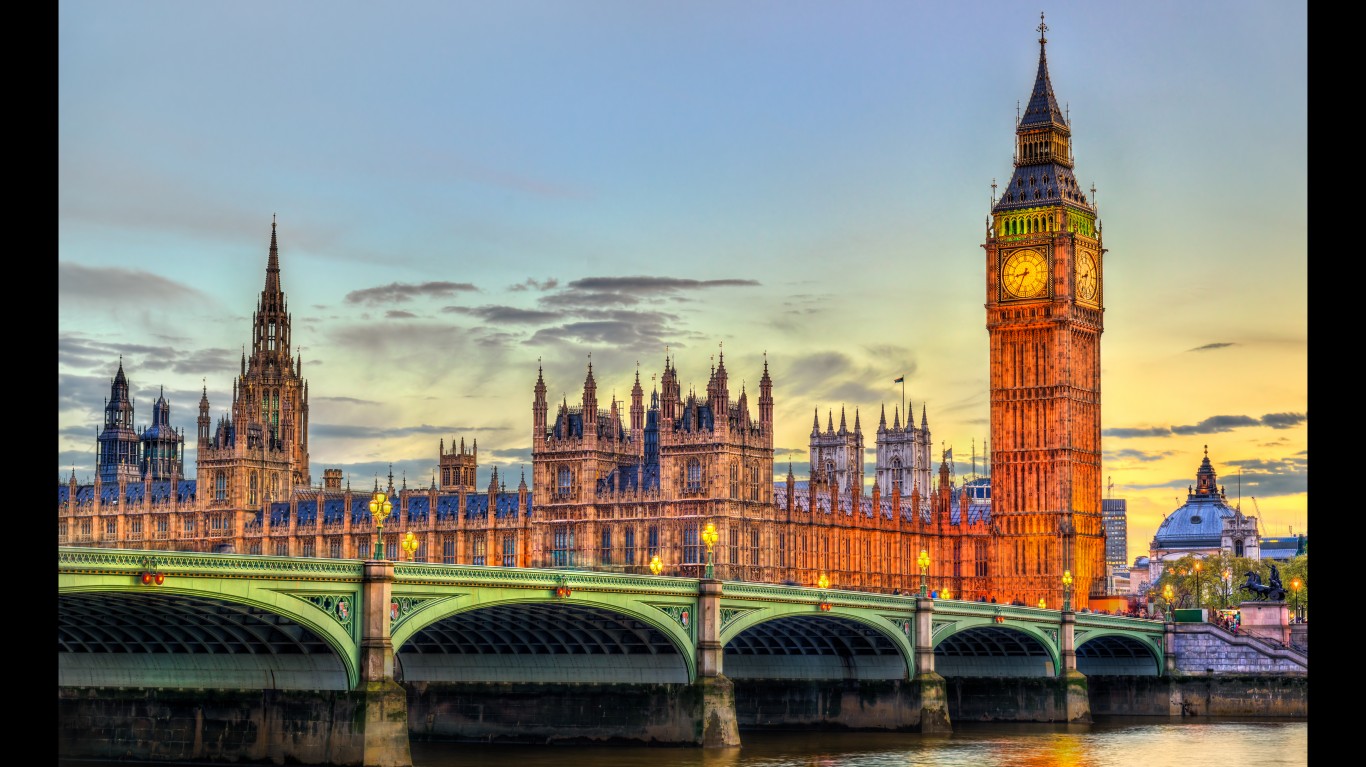
5. United Kingdom
> Military spending, 2022: 2.23% of GDP ($68.5 billion total – 2nd highest of 31 member states)
> Year of accession to NATO alliance: 1949 (founding member)
> Current head of government: Prime Minister Rishi Sunak
> Population, 2021: 67,326,569 (5th largest of 31 member states)

4. Poland
> Military spending, 2022: 2.39% of GDP ($16.6 billion total – 8th highest of 31 member states)
> Year of accession to NATO alliance: 1999
> Current head of government: Prime Minister Mateusz Morawiecki
> Population, 2021: 37,747,124 (9th largest of 31 member states)
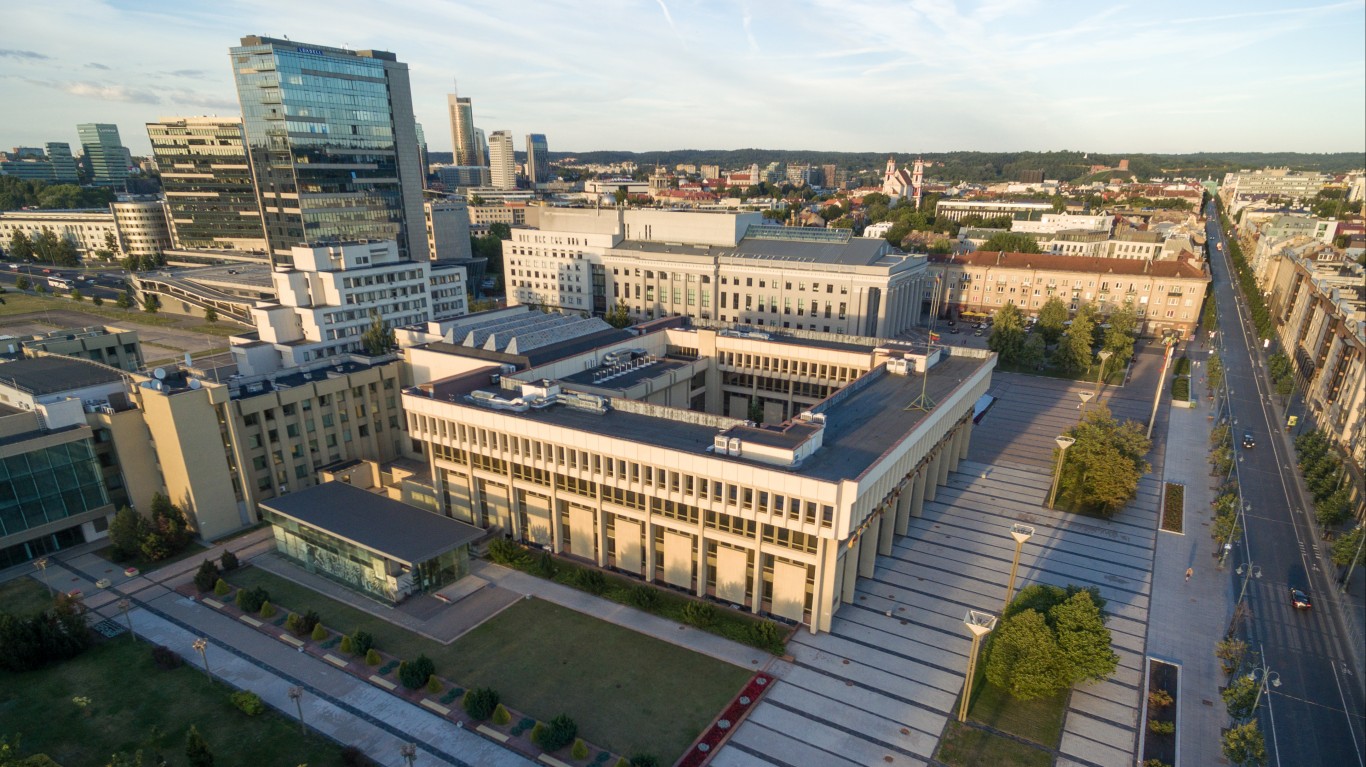
3. Lithuania
> Military spending, 2022: 2.52% of GDP ($1.7 billion total – 21st highest of 31 member states)
> Year of accession to NATO alliance: 2004
> Current head of government: Prime Minister Ingrida Simonyte
> Population, 2021: 2,800,839 (24th largest of 31 member states)
[in-text-ad-2]

2. United States
> Military spending, 2022: 3.45% of GDP ($876.9 billion total – the highest of 31 member states)
> Year of accession to NATO alliance: 1949 (founding member)
> Current head of government: President Joe Biden
> Population, 2021: 331,893,745 (the largest of 31 member states)

1. Greece
> Military spending, 2022: 3.69% of GDP ($8.1 billion total – 12th highest of 31 member states)
> Year of accession to NATO alliance: 1952
> Current head of government: Prime Minister Kyriakos Mitsotakis
> Population, 2021: 10,641,221 (13th largest of 31 member states)
Credit Card Companies Are Doing Something Nuts
Credit card companies are at war. The biggest issuers are handing out free rewards and benefits to win the best customers.
It’s possible to find cards paying unlimited 1.5%, 2%, and even more today. That’s free money for qualified borrowers, and the type of thing that would be crazy to pass up. Those rewards can add up to thousands of dollars every year in free money, and include other benefits as well.
We’ve assembled some of the best credit cards for users today. Don’t miss these offers because they won’t be this good forever.
Flywheel Publishing has partnered with CardRatings for our coverage of credit card products. Flywheel Publishing and CardRatings may receive a commission from card issuers.
Thank you for reading! Have some feedback for us?
Contact the 24/7 Wall St. editorial team.
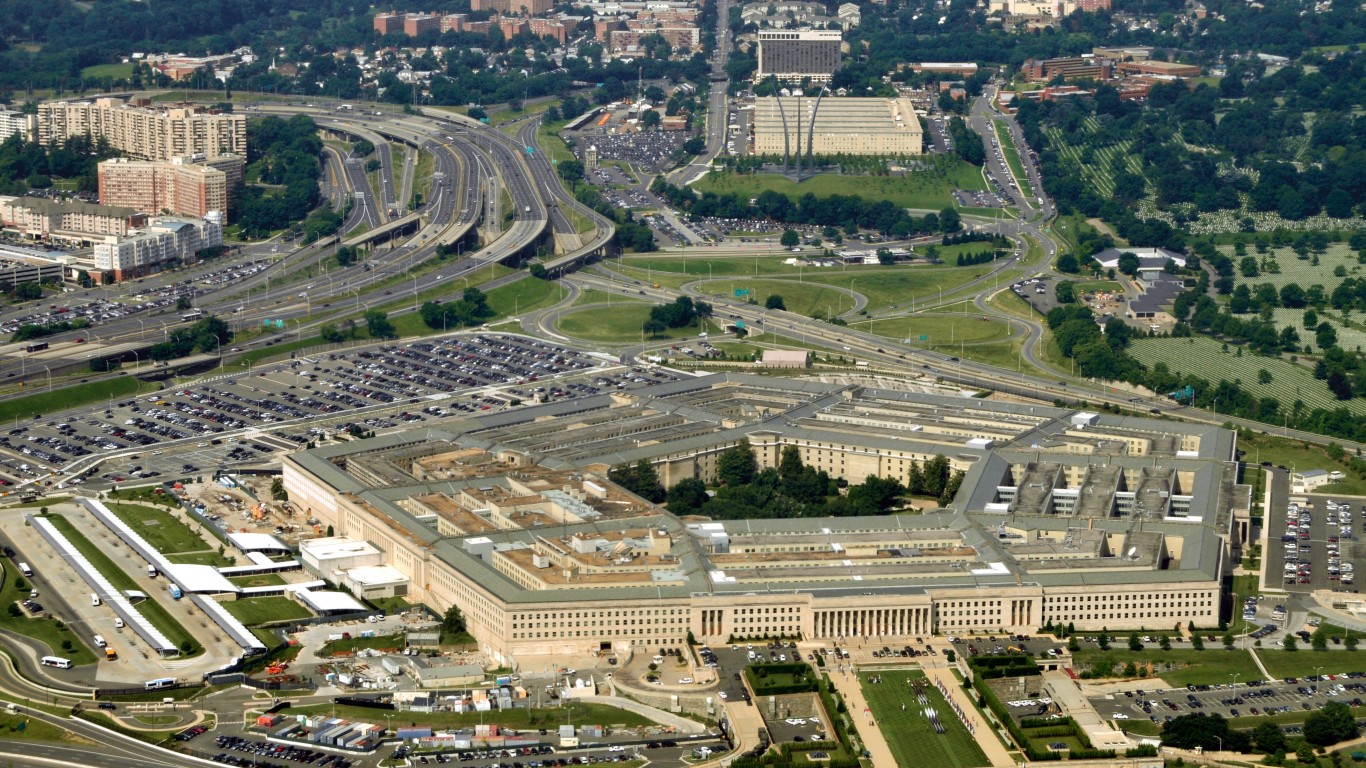 24/7 Wall St.
24/7 Wall St.